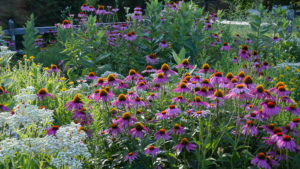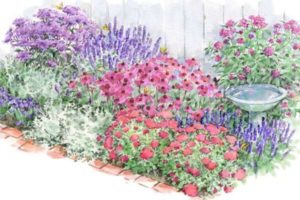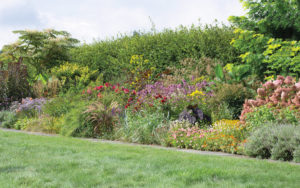As visitors stroll the display gardens at the farm, they often ask us about the plants they see in the borders and beds. No plants generate more questions than Alliums. Members of this genus are available in a broad range of colors – from various shades of purple to pink, true blue, yellow, and white, but the hallmark of this family of plants is a form that is both playful and utterly distinctive. Larger cultivars such as Alliums ‘Globemaster,’ form sizeable spheres (in this case 8-10” flower heads) that appear to float like balloons above other plants in the border. Smaller varieties including the delightful Drumstick Allium (Allium sphaerocephalon), produce lollipop-sized orbs on slender stems at a lower height.
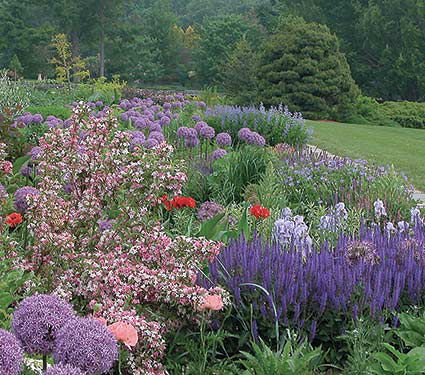
Alliums are more commonly known as Flowering Onions, a pedestrian name unworthy of these remarkable plants.
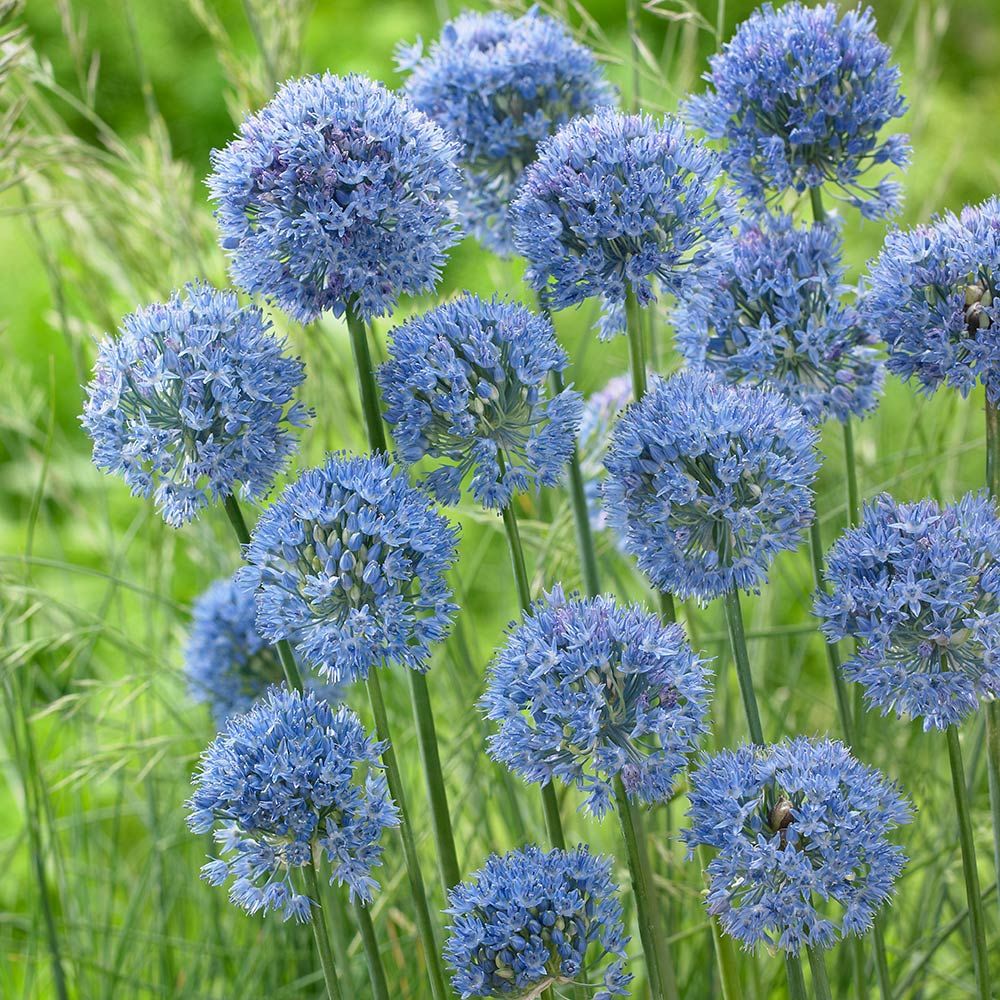
It’s worth mentioning that Alliums, like Daffodils, are deer and rodent resistant, thanks to their faint oniony scent. The odor is not noticeable above the ground unless the leaves are cut or bruised, and many of the flowers have an enchanting, sweet scent. There are hundreds of species within this under-appreciated genus, and we annually struggle to restrain ourselves to a reasonable selection. They are reliable perennials when they get good drainage and plenty of sun.
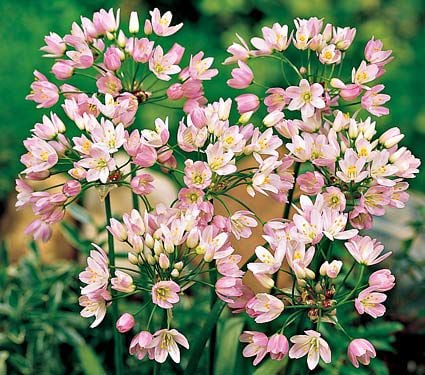
Using Alliums in the Garden
Alliums offer colorful, distinctive, and long-lasting flower forms that are standouts in the early summer garden (there are some fall bloomers as well). They love sun and prefer a well-drained, even sandy, soil as long as it has sufficient nutrients. Tuck the bulbs around clumps of summer-flowering perennials where the Alliums’ withering foliage will be hidden by the expanding perennials. Some combinations we use at the nursery include Allium ‘Globemaster’ among Echinacea (Purple Coneflower); Allium sphaerocephalon (the Drumstick Allium) with Yarrow, Asiatic Lilies, or Phlox; and Allium cristophii (Star of Persia) with Salvia ‘May Night,’ Alchemilla mollis (Lady’s Mantle), or Roses. We offer 5 varieties of the shorter Alliums (10–30″ tall) as A Big Mix of Little Alliums. They look best along the edge of a shrub border or planted in front of late-blooming perennials.
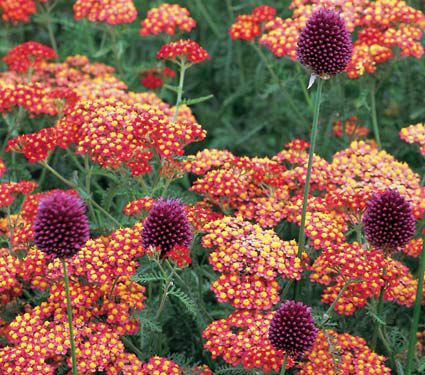
How to Care for Your Allium Bulbs
Light/Watering: Most Alliums grow best in full sun, with at least 6-8 hours of direct sunlight a day. Those we offer require well-drained soil and are longest lived in locations where the soil is on the dry side during summer dormancy.
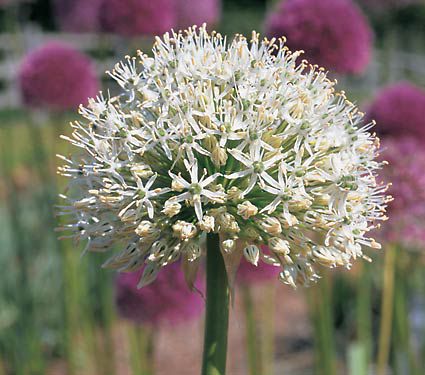
Planting: Plant Alliums more shallowly than comparably sized bulbs, just one to two times the diameter of the bulb deep.
Fertilizer/Soil and pH: Alliums prefer well-drained, fertile soil. Fertilize in fall and spring with any bulb fertilizer.
Continuing Care: The leaf tips of many varieties, especially the tall ones, begin to brown before bloom time. Remove the spent flowers (except from varieties that are sterile, such as ‘Globemaster’) if you wish to prevent them from self-sowing.
Pests/Diseases: Alliums have few problems except when planted too shallowly or in wet soil.
Companions: Place Alliums behind heavy-foliage plants such as Peonies and Iris. Good for bedding, and in mixed borders. Flower heads are good for drying.
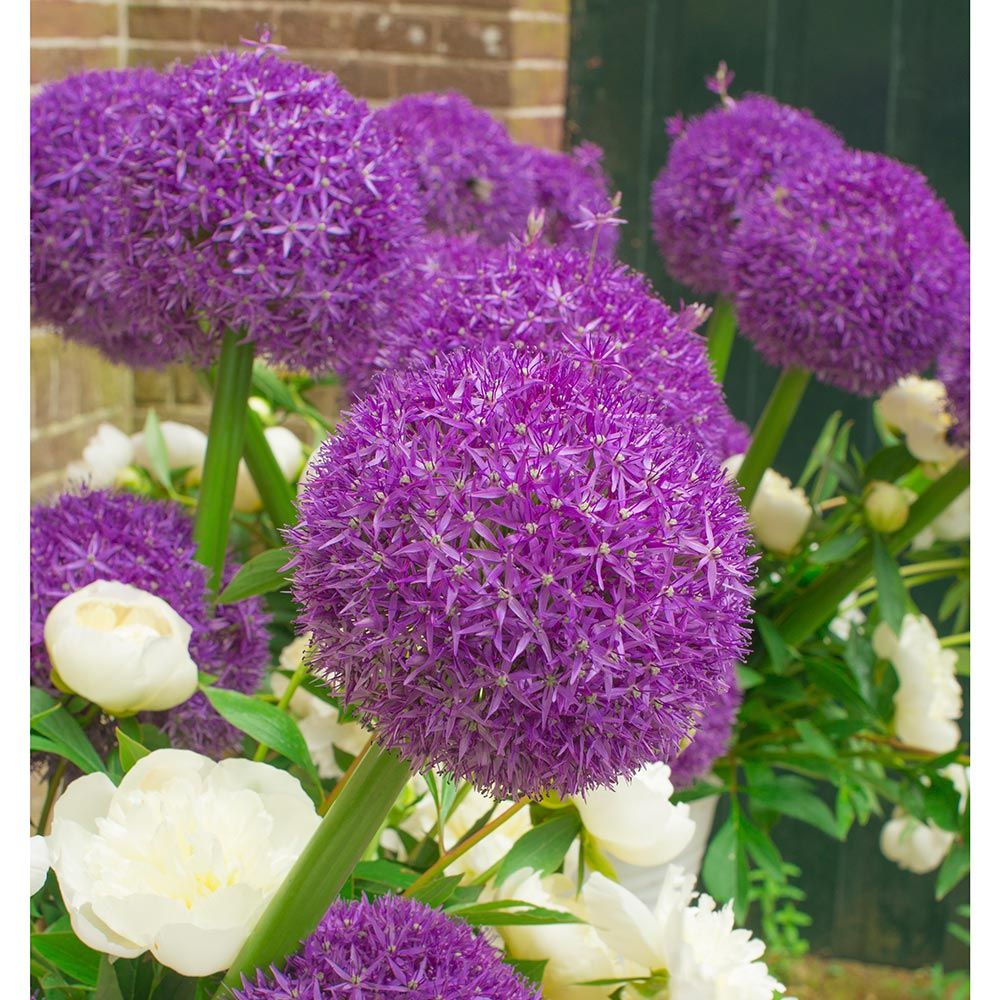
Dividing/Transplanting: Alliums rarely need transplanting or dividing, but this can be done when the bulbs are dormant.
You can find additional information in our Allium Growing Guide.

